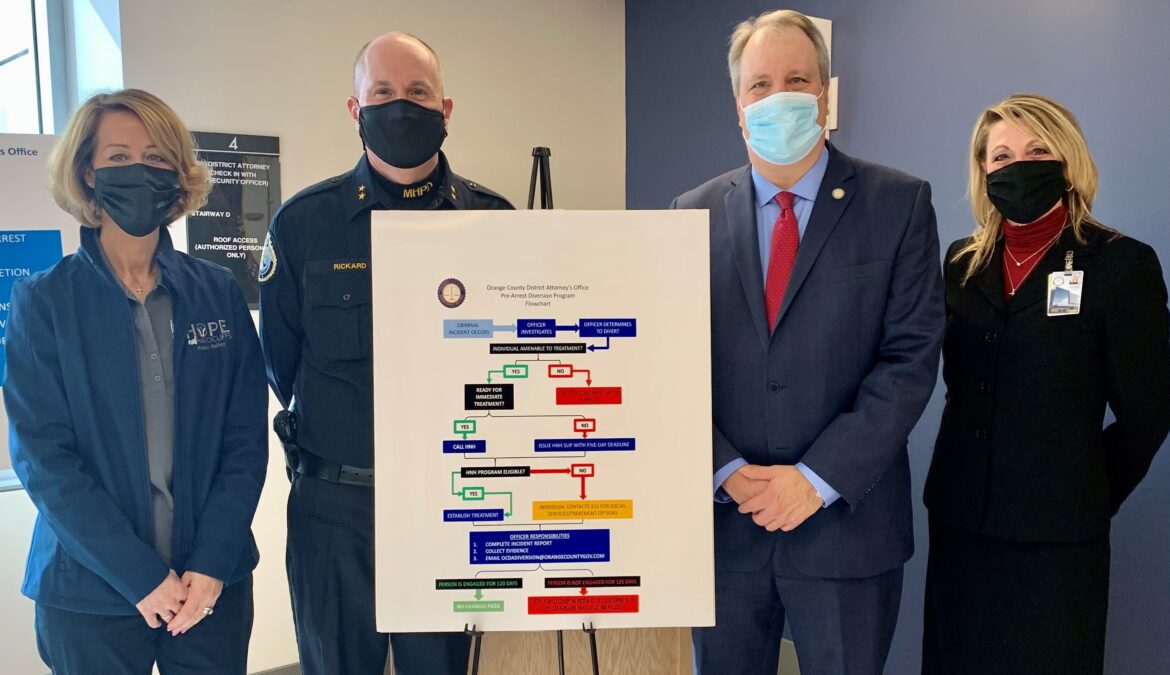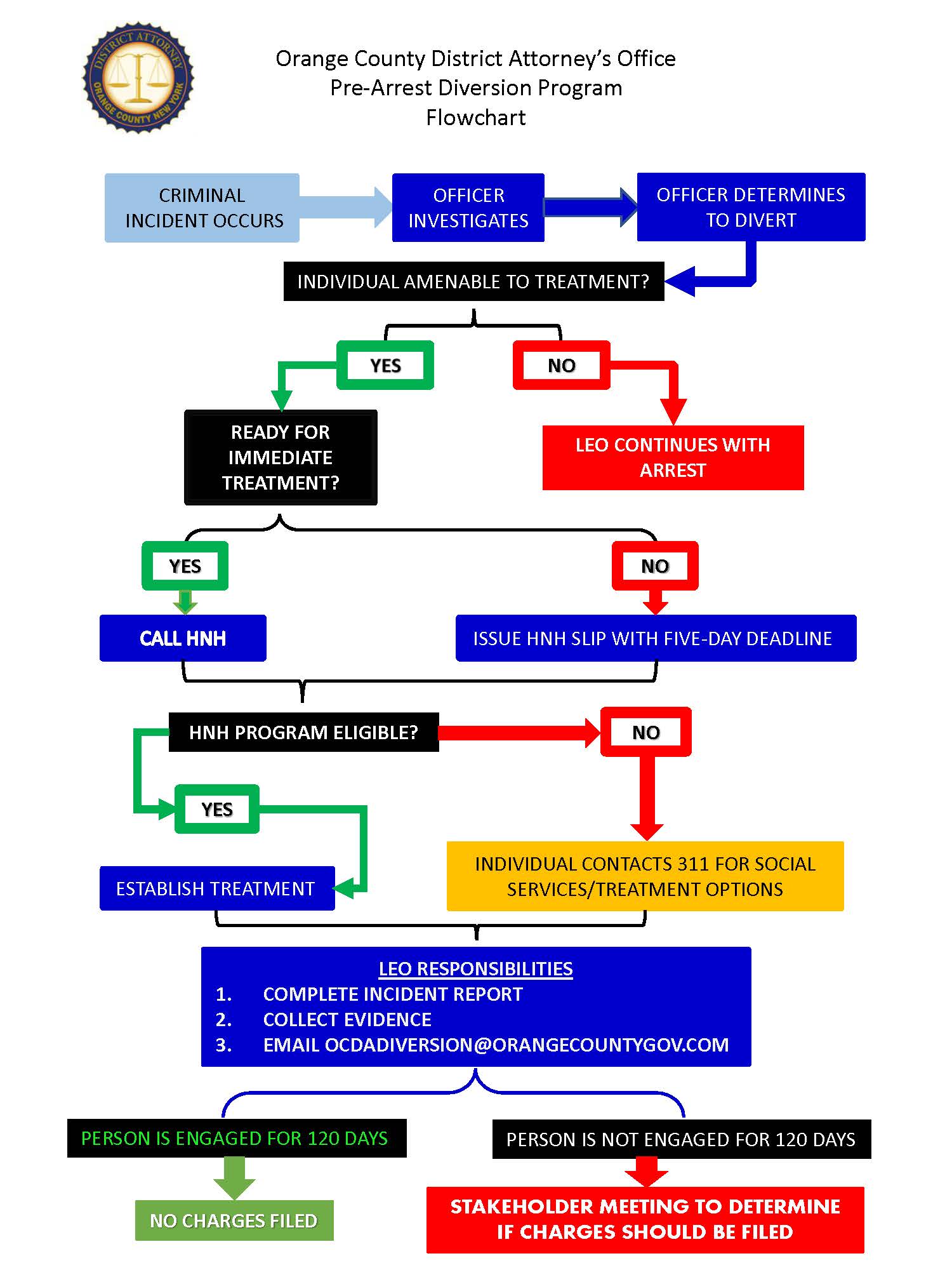Orange County District Attorney David M. Hoovler recently announced the launch of the Orange County Pre-Arrest Diversion Program, designed to refer to drug treatment, if appropriate, those accused of some drug crimes, rather than filing charges against them in court.
“The hope is that the Pre-Arrest Diversion Program will be a vehicle to steer many users away from drugs, and away from the criminal justice system, so that they can live healthy and productive lives, without the stigma of criminal convictions hanging over their heads,” Hoovler said.
The Orange County Pre-Arrest Diversion Program was developed in partnership with the Orange County District Attorney’s Office, Hope Not Handcuffs – Hudson Valley, and the Police Chiefs’ Association of Orange County.
For more information about the Orange County Pre-Arrest Diversion Program, please contact Executive Assistant District Attorney Leah Canton at (845) 291-2050, or by email to ocdadiversion@orangecountygov.com.
HOW IT WORKS:
After investigating a case, if an officer believes that a subject would benefit from drug treatment and the individual is open to the option, the officer can refer the subject for assistance from Hope Not Handcuffs – Hudson Valley, instead of charging them with a crime.
Hope Not Handcuffs – Hudson Valley volunteers will then help the subject find the treatment services that will best support their recovery.
If for any reason Hope Not Handcuffs – Hudson Valley isn’t able to assist an appropriate candidate, the involved officer can refer the person to the Orange County Crisis Help Line at 311 for assistance.
If the individual is successful in treatment, no charges will be filed. If the individual is unsuccessful, the District Attorney’s Office and other stakeholders will discuss whether to file charges at that point.
Pre-Arraignment Diversion Flow Chart
“The drug epidemic has claimed thousands of lives, and ruined many more. Rather than prosecute drug users for crimes, we would prefer, when appropriate, to connect users with treatment, so that they have the tools to make better choices that can save their lives,” Hoovler said.
Fact Facts about Drug Abuse & Incarceration:
- An estimated 65% of the United States prison population has an active SUD (substance use disorder). (source: National Institute on Drug Abuse)
- In 2017, one incarcerated person in five faced a drug charge. Of those, 456,000 were held for a nonviolent drug offense, including possession. (source: Prison Population Initiative)
- Only 11% of people who have been incarcerated and have addictions get treatment for their addictions. (source: American Public Health Association)



